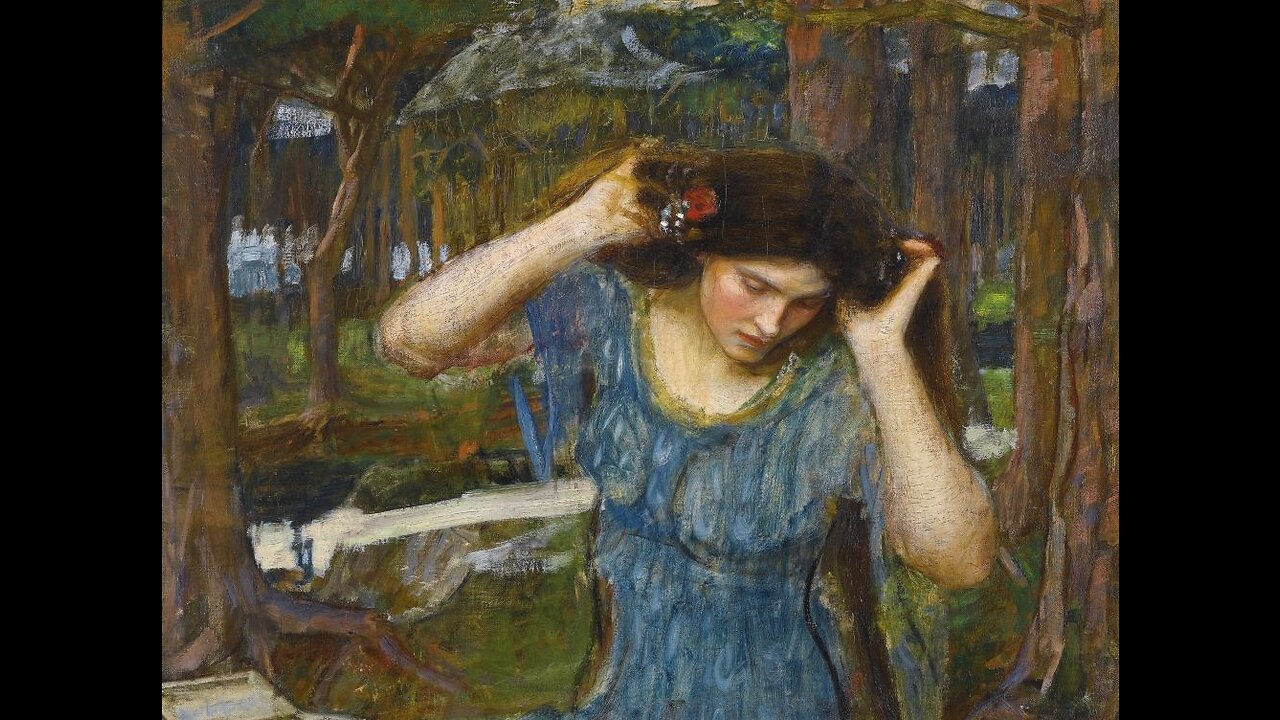Premium Only Content

"The End of the Story" by Clark Asthon Smith
Clearly this Benedictine Monastery must be different from the one in the Colossus of Ylourgne, as the ruins across from the monastery in that story of the ruins of Ylourgne, and here we have the ruins of Faussesflammes. Not the first reference we've had to Faussesflammes, but this is the first reference to a monastery being nearby to it. Of course, it is possible this monastery was built much later than the one at Ylourgne, we have no way of knowing. It is strange, though, that all these monasteries in Averoigne are built across from some evil castle ruins. Why would they do that? Hmmmm....
refectory: a room used for communal meals in an educational or religious institution
floriated: decorated with floral designs
incunabula: early printed books, especially those printed before 1501
delectation: pleasure or delight
charnel: a building or vault in which corpses or bones are piled
ineffable: too great or extreme to be expressed or described in words
beatific: blissfully happy
Apollonius of Tyana is said to have defeated the Lamia of Corinth, a feat celebrated by John Keats in a poem "Lamia"
This is the first story in which holy water actually does anything useful! It's also the latest (late 18th century) story in the series, interestingly enough. And the only story where it works, as this is the last short story in the Averoigne cycle. There's one more poem to round it out, so this is the one and only example of holy water actually working in all of the Averoigne history we are exposed to.
The picture used is "Vain Lamorna: a Study for Lamia", by John William Waterhouse
To follow along: http://www.eldritchdark.com/writings/short-stories/63/the-end-of-the-story
-
 2:40:10
2:40:10
DLDAfterDark
5 hours ago $0.11 earnedDLD Live! Feat. Red Dawn Readiness! Glock FRT's - Striker Fire Safety Concerns - ACE Trigger
11.4K1 -

BlackDiamondGunsandGear
4 hours agoAre ALL Striker Fired Pistols UNSAFE? // After Hours Armory
27K4 -
 6:34:50
6:34:50
SpartakusLIVE
8 hours ago#1 Saturday Spartoons on RUMBLE PREMIUM
102K6 -
 1:04:59
1:04:59
Man in America
9 hours ago“Summoning the Demon” — The AI Agenda Is FAR WORSE Than We Know w/ Kay Rubacek
34.7K20 -
 2:16:48
2:16:48
Tundra Tactical
7 hours ago $0.07 earned🎯💥 The World’s Okayest Gun Show 🔫😂 | LIVE Tonight on Rumble!
20.2K -
 3:36:03
3:36:03
Mally_Mouse
1 day ago🌶️ 🥵Spicy BITE Saturday!! 🥵🌶️- Let's Play: Tower Unite!
43.6K2 -
 58:59
58:59
MattMorseTV
7 hours ago $1.27 earned🔴Trump just BROKE Newsom.🔴
59.9K68 -
 18:14
18:14
Her Patriot Voice
7 hours agoWho Is WORSE for NYC: Trump Girl or Socialist?
39.6K29 -
 3:39:42
3:39:42
SavageJayGatsby
6 hours agoSpicy Saturday with Mally! | Road to 100 | $300 Weekly Goal for Spicy Bites!
41.5K1 -
 3:35:50
3:35:50
FomoTV
8 hours ago🚨 Swamp Theater: FBI Raids Bolton 🕵 Still NO Epstein Files, Trump's Troops & the Red Heifer Hoax 🐂 | Fomocast 08.23.25
17.7K5